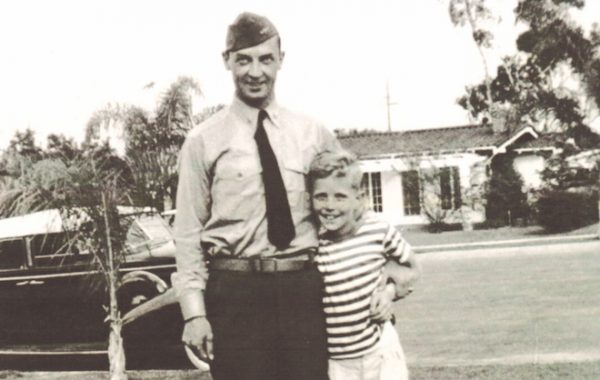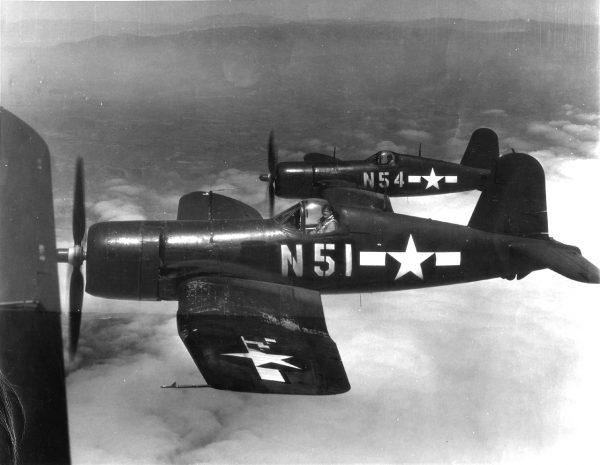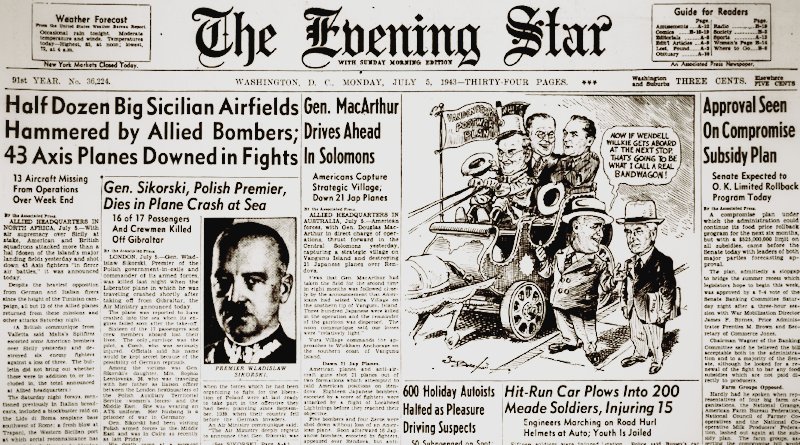World War II Chronicle: July 5, 1943
Click here for TODAY’S NEWSPAPER
At the bottom of the front page is the story of 2nd Lt. Jack A. Bade, a P-40 pilot with the 44th Fighter Squadron. Lt. Bade was hit in the back of the head and knocked unconscious during a Feb. 13 dogfight. He regained consciousness 400 feet from the deck and, although his Warhawk was shot up and his guns were jammed, he ran off six enemy fighters on his way back home. Bade earned his second victory of the war and is awarded the Distinguished Service Cross for his heroics…

11-year-old Donald Lovelace Jr. was at Norfolk Naval Yard to witness the launch of the destroyer escort named in honor of his father, USS Lovelace (DE-198). Lt. Cmdr. Donald Lovelace Sr. was the executive officer of John Thach’s Fighting Squadron 3 (VF-3) and was killed when a rookie aviator smashed into his plane while attempting to land aboard the carrier. Don Jr. will graduate from the Naval Academy in 1955 and retires as a commander…

Page five reports that the U-boat menace in the Atlantic seems to have withered away. The Kriegsmarine lost 30 subs last month and May was even worse. No Allied ships have been reported sunk in three of the last four weeks according to the Navy. With American shipyards having already produced more merchant ships in six months than all of last year, we seem to have won the Battle of the Atlantic. In fact, the next page announces we launched nine warships just this weekend…
George Fielding Eliot column on page eight… Sports begin on page 13, and the St. Louis Cardinals have swept the Brooklyn Dodgers, now four games behind the league-leading Redbirds…
There is a story of another dogfight involving Lieutenant Bade on page 25, although he is not mentioned. A mixture of Marine Corps F4U Corsairs, Army Air Force P-40s and P-38 Lightnings, and Royal New Zealand P-40s jumped a flight of 112 Japanese warplanes. Bade shot down one and saved a P-38 pilot from being finished off by Japanese ace Masuaki Endo, who then goes nose-to-nose with another P-40 flown by 1st Lt. Henry E. Matson. Endo’s fighter bursts into flame, but he goes down swinging and smashes his plane into Matson, who jumped out of his flaming cockpit and parachuted through the furball of fighters. Matson splashed two enemy warplanes during the dogfight. Matson was Endo’s 14th and final victory.
Marine Fighter Squadron 112 (VMF-112) skipper Maj. Robert B. Fraser got his fifth and sixth kills of the war before he too was shot down. Bade gets his third victory of the war in this June 7 engagement and has become an ace since. Last month we wrote about Lt. James G. Percy, who survived a 2,000 foot fall into the ocean when his chute didn’t open, and Lt. Sam S. Logan, whose feet were chopped up by a Japanese propeller as Nelson descended in his parachute. Before the Japanese pilot could finish him off A New Zealand plane saved Logan from being finished off by chasing away the Japanese pilot. These stories all come from this same air battle.
A freshly commissioned second lieutenant named John Glenn has just transferred to Marine Observation Squadron 155 (VMO-155). Glenn had been flying R4D transports (the Navy designation for the Douglas C-47 Skytrain) at Camp Kearny, Calif.1Kearny becomes Naval Air Station Miramar — the home of the Navy’s Top Gun training, and asked to transition to fighter aircraft. Glenn’s new squadron is currently moving to Marine Corps Air Station El Toro, where they will ditch their F4F-3P Wildcats for Chance-Vought F4U Corsair.

Evening star. (Washington, D.C.), 5 July 1943. Chronicling America: Historic American Newspapers. Lib. of Congress.
https://chroniclingamerica.loc.gov/lccn/sn83045462/1943-07-05/ed-1/
